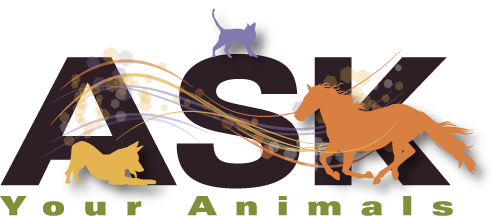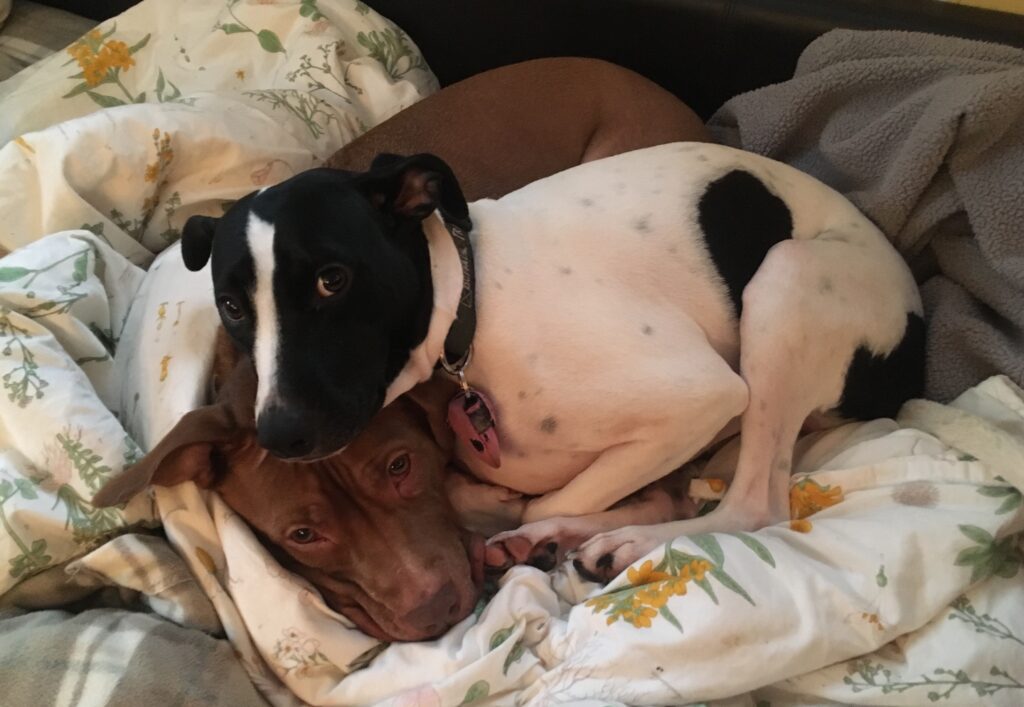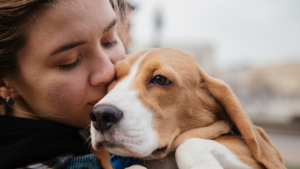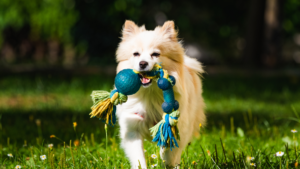Do you have anxiety or have you ever felt anxious? Chances are that you have. Since anxiety is “an overwhelming sense of apprehension and fear often marked by physiological signs”, it’s a pretty common thing. In fact, according to the American Psychiatric Association, nearly 30% of Americans suffer from anxiety in their lifetime. That’s nearly 1 in every 3 people!
Have you ever thought that your dog might have anxiety? Even humans have a hard time identifying their own anxiety, let alone their pets. Imagine being a dog that cannot verbally communicate it or even do anything on its own to reduce it. Since the first week of May is Dog Anxiety Awareness Week, I’d like to share some information with you about how to identify that your dog has anxiety and how to help them with it as well.
Dog Anxiety Signs
Just as with any disorder, there are several signs that can also overlap with other disorders and illnesses. No matter what you expect that your dog may have, it’s a good idea to take note of the symptoms they have and how often they are displaying them. Here are some signs that could indicate that your dog has anxiety that you’ll want to take note of:
- Changes in eating habits
- Digestive issues such as acid reflux and diarrhea
- Hiding or disappearing from view
- Displays of fear, such as shaking/trembling
- Lashing out unexpectedly
- Unusual growling, or showing teeth
Our dogs take cues from our own behavior so relax your muscles, slow and deepen your breath and manage your own anxiety to demonstrate the desired behavior to your dog.
Why do dogs get anxious?
Anxiety can be triggered in dogs by many factors. In some cases, a dog may have a negative association with a common object used by a human such as a hat or walking cane. In many situations, the negative associations can be removed through training with a qualified professional. Big life changes like a new home or introducing a baby, new roommate, or an additional pet to the house can result in anxiety. Sometimes these changes merely require an adjustment period, but in some cases may require training to assist the dog with acclimating to the newness.
In my experience, the most common cause of anxiety with dogs is noise. Loud noises such as fireworks, gunfire, thunder, alarms, and even yelling can cause anxiety. Reactions can range from merely a bark to long periods of distress. Sometimes creating a distraction or replacing the noise with another one can help. Aids that can help reduce anxiety include:
- Compression – such as a tight-fitted shirt or wrap similar to swaddling a newborn
- Calming music
- Running a fan
- Diffusing essential oils. Be careful though, not all essential oils are safe for dogs. Some that are safe and commonly used include lemongrass, lavender, and rosemary
- Massage
- Use a gentle tone with your dog, and do not use a voice they may mistake as praise for their behavior this may only add confusion
Using An Animal Communicator to Reduce Anxiety
Sometimes anxiety happens sporadically, but sometimes it can become a routine issue. An animal communicator can help you to pinpoint the cause of distress. Without knowing the trigger, you may be unknowingly making the situation worse, or better yet the solution may be something simple that never occurred to you. Be proactive and plan for utilizing the above-listed aids when you know there may be an anxiety-inducing event such as July 4th, an incoming storm, or houseguests. Consult a qualified trainer to help you work through specific reactions. You can be your dog’s greatest advocate by creating a safe environment. Not only will you both be happier, but your bond will also strengthen.



